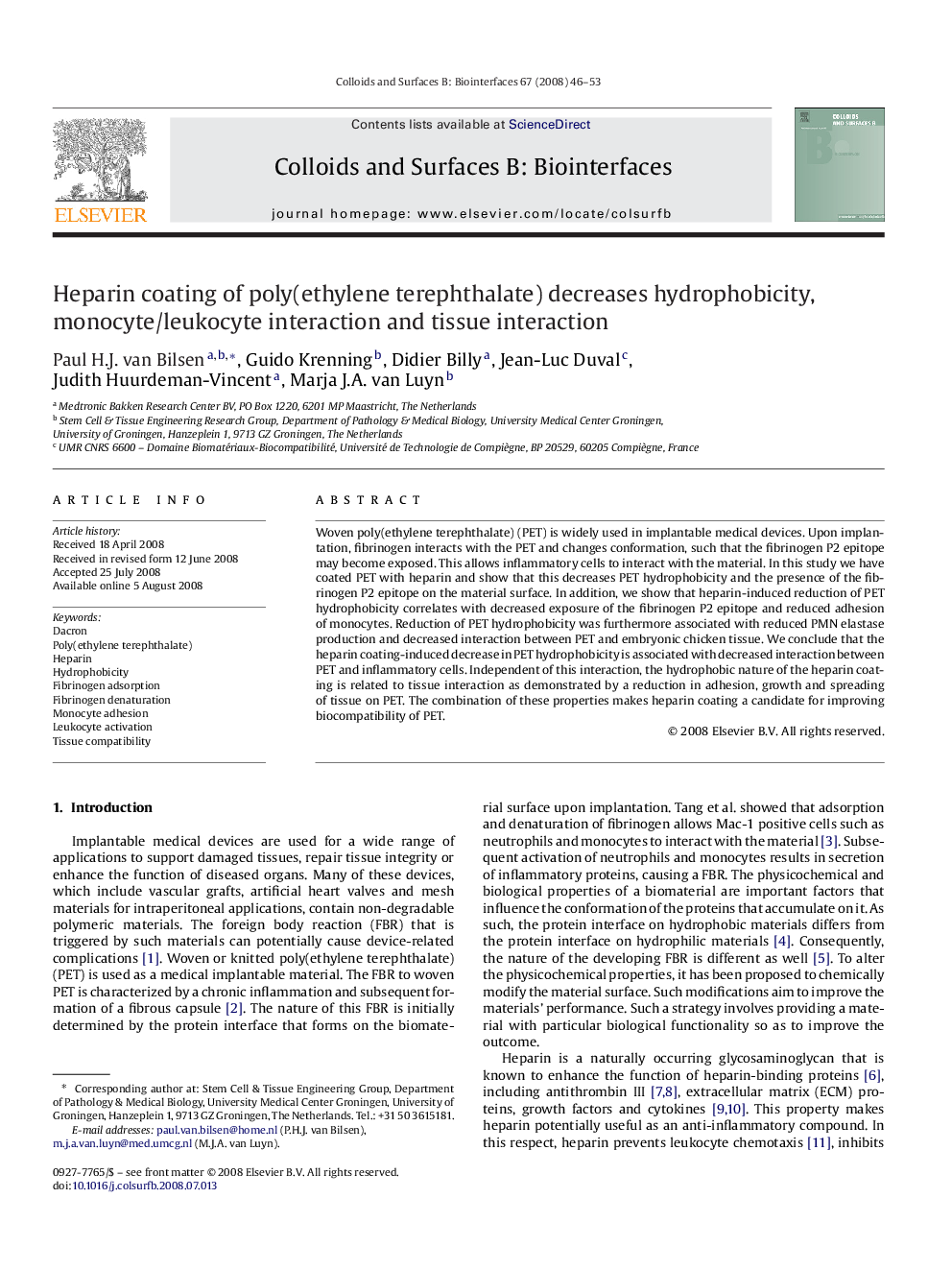| Article ID | Journal | Published Year | Pages | File Type |
|---|---|---|---|---|
| 602053 | Colloids and Surfaces B: Biointerfaces | 2008 | 8 Pages |
Woven poly(ethylene terephthalate) (PET) is widely used in implantable medical devices. Upon implantation, fibrinogen interacts with the PET and changes conformation, such that the fibrinogen P2 epitope may become exposed. This allows inflammatory cells to interact with the material. In this study we have coated PET with heparin and show that this decreases PET hydrophobicity and the presence of the fibrinogen P2 epitope on the material surface. In addition, we show that heparin-induced reduction of PET hydrophobicity correlates with decreased exposure of the fibrinogen P2 epitope and reduced adhesion of monocytes. Reduction of PET hydrophobicity was furthermore associated with reduced PMN elastase production and decreased interaction between PET and embryonic chicken tissue. We conclude that the heparin coating-induced decrease in PET hydrophobicity is associated with decreased interaction between PET and inflammatory cells. Independent of this interaction, the hydrophobic nature of the heparin coating is related to tissue interaction as demonstrated by a reduction in adhesion, growth and spreading of tissue on PET. The combination of these properties makes heparin coating a candidate for improving biocompatibility of PET.
